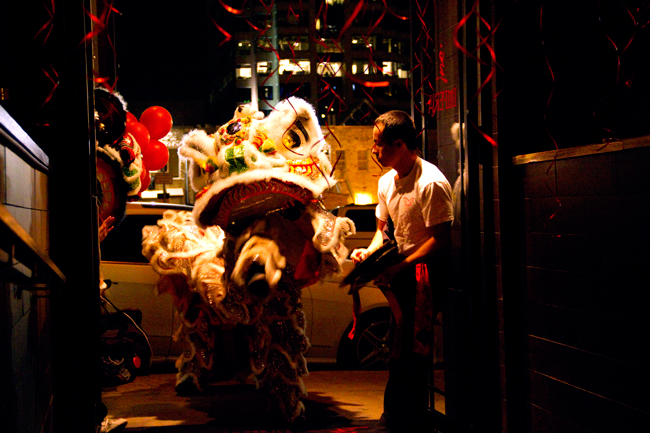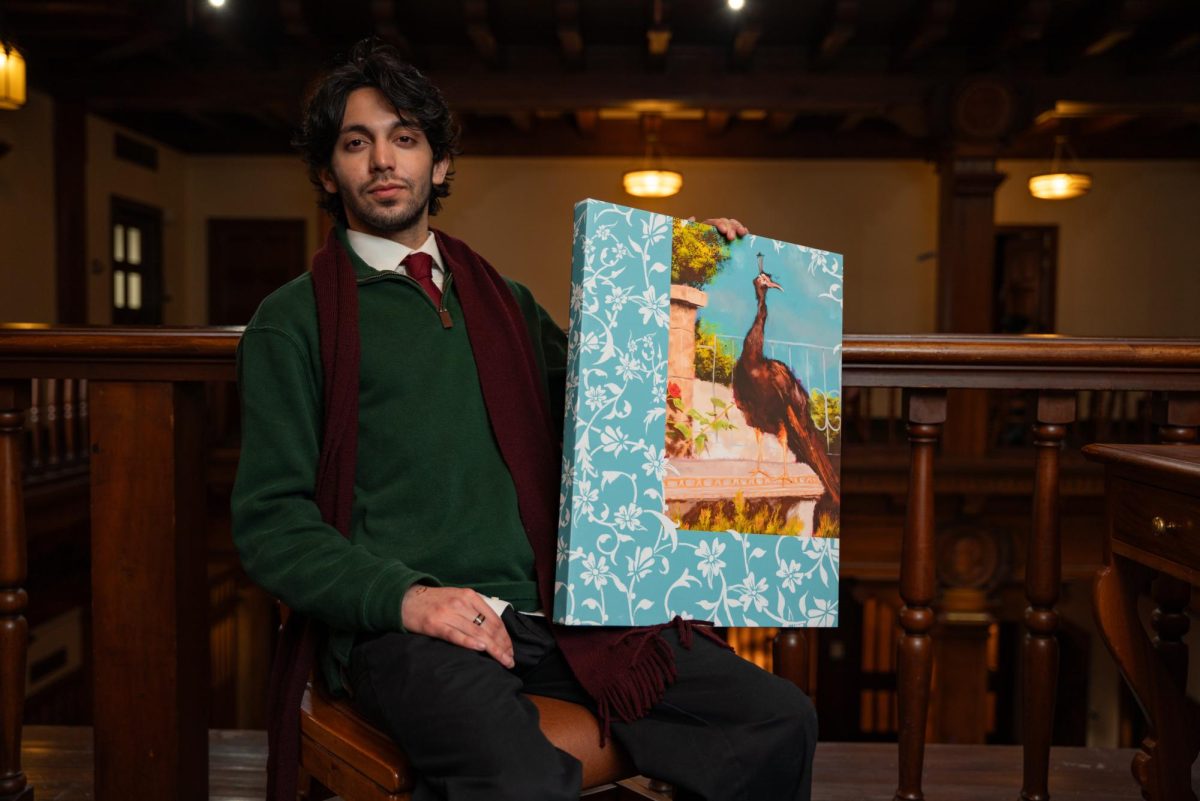Six students run holding their poles at 90 degree angles, each attached to part of a Chinese dragon’s body. After weaving back and forth across the South Mall, they create a wall with the dragon’s body for any passers-by to admire. Like a coil, the body of the dragon springs forward, taking a bow to end the practice.
“I like that it’s energetic and cool looking,” said Nhan Nguyen, Texas Dragon/Lion Dance Team director. “The audience likes the spectacle of it, the sights and sounds and the festive nature of it.”
Lion dance teams have traditionally come from local temples and martial arts groups, but in 2000 a group of UT students, not affiliated with either a temple or a martial arts school, decided to create a student organization dedicated to the instruction and performance of the art of lion and dragon dancing.
“It adds more Asian culture for diversity and it’s fun to see something new that you’ve never seen before,” said Helen Febrie, member of Texas Dragon/Lion Dance Team. “Who knows, it might be an inspiration for something great later on.”
The dragon dance and lion dance were originally performed in various countries in southeast Asia, including China, Malaysia and Vietnam. In modern times, the dance is performed everywhere around the world.
The dances represent the mythical creatures in Asian culture that are symbols of good luck and prosperity, and are traditionally performed during the Lunar New Year, which took place this past Monday.
Although the team currently uses both lions and dragons in performances, this was not always the case. When the team was first established in 2000 they only performed lion dancing, but have recently expanded to include dragon dancing, which is especially appropriate as this is the Year of the Dragon in the Chinese calendar.
“The dragon dance is now getting a more prominent focus now that we have our own dragons,” Febrie said.
However, the styles between the two differ greatly: While lion dancing is very energetic and spontaneous, dragon dancing requires more cardio and is more restricting because the dragon body has to move as one in a certain way, with very precise timing.
Additionally, the dragons are longer than the lions. The serpent style that the team uses is for four to 12 people. In contrast, when the team performs lion dancing they only use two students and, following Asian cultural norms, the creatures used in the lion dance actually have the head and body of a dragon.
“Exposing people to [lion and dragon] dancing will pique their interests toward Asian culture,” said civil engineering graduate student Jin Kwon and member of Texas Dragon/Lion Dance Team. “I had no experience in lion or dragon dancing. I didn’t even know it existed, but I was just so intrigued by the energy and the people.”
To keep the dragons level, the team practices following the person in front of them while also remembering to maintain proper distance between the poles used to lift the body of the dragon and lion off the ground.
The team practices on the South Mall every Sunday. Because many of the members have never had experience dancing as a team before, they are learning as they go. Consequently, this puts more pressure on them to pick up skills quickly since the team typically performs multiple days each week for restaurants and birthday parties.
“My ancestors are all Chinese and I wanted a way to express my culture in a way the community isn’t used to seeing,” Febrie said. “It’s something that you have to see to appreciate, but you have to dance to understand.”
Printed on Friday, January 27 as: Lion, dragon dancing preserves culture





















